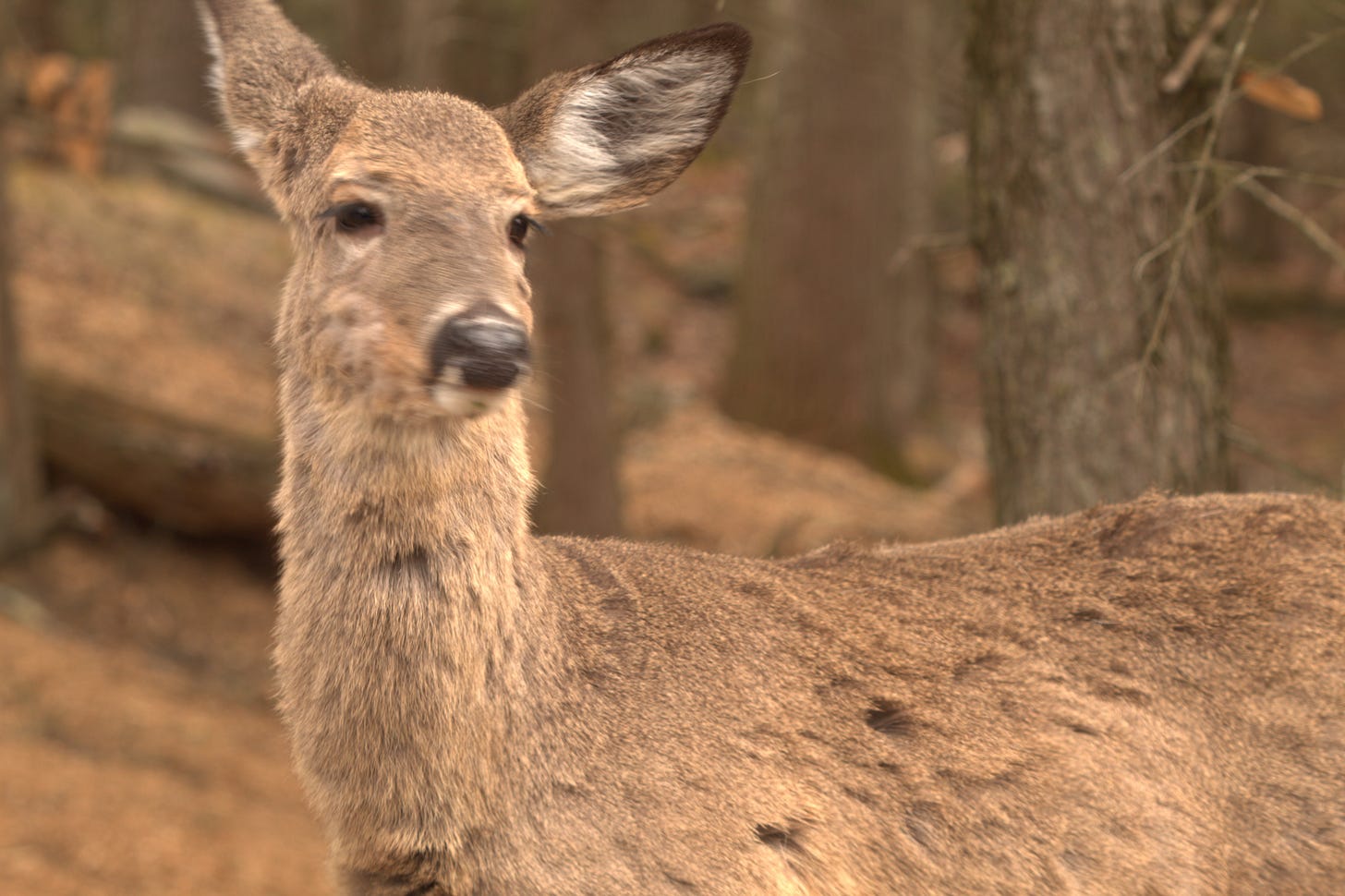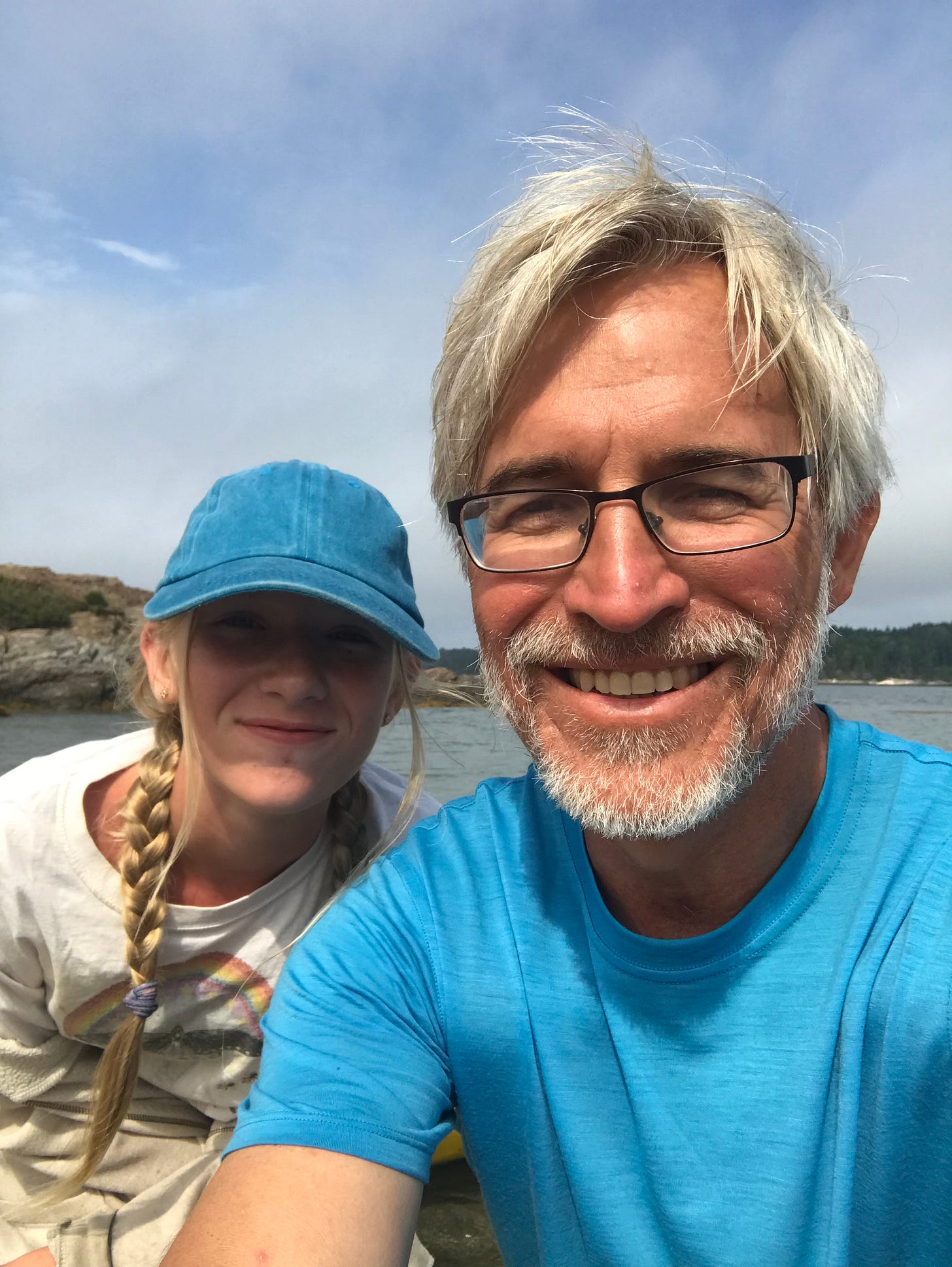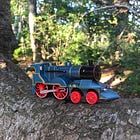Spring air warms up with pollinating blooms here in New York, and I’m feeling energized and borderline jittery. If I’m not mindful, my attention can disperse in the wind, and my focus flags.
This is a different set of sensations than the mental fog and heaviness of just a few wintry weeks ago. (Not that I’m free of the world’s weight.)
You might be feeling the springy jitters or a nagging fog that dampens your mood and clouds your focus. Clients, Masterminders, and community members report both.
Many complex endeavors are ahead this season - keynotes, a cohort launch, retreat and workshop design, deliverables and, especially, full presence with my daughters, wife, and friends.
Your work life and your life outside of work brim too, I bet. And amidst the fullness you likely want to feel more effortless as you sustain focus on one or more complex endeavors. A little less push.
If so, let’s look at one key Flow Foundation: Physical Energy. Specifically, how you see, move, and breathe. How you see? Yes. It might matter most.
Ready? Let’s dive in.
In this week’s Wonder Dispatch:
Main Wondering: how micro-adjustments can prompt more effortless focus
A teaser of something to come
On Jeffrey’s Radar & Community Howl-Outs
Wonder Begins With the Eyes
One of the Five Key Insights into Wonder is this: Wonder begins with how we see.
If you’ve ever gazed into an infant’s eyes, you know what I mean. My gazing into my firstborn daughter’s sky-blue eyes kind of reset me on this course of tracking wonder.
Our eyes are our first instruments of wonder as infants, and they remain powerful levers of perception into adulthood. Yet as we age, our brains tend to over-categorize, narrowing our perception. We stop seeing what’s right in front of us such as shapes, colors, objects, designs, and even people because our brains already "know" them.
It’s like our brains’ anti-wonder survival mechanism.
But when perception narrows, so does possibility.
Here’s some of what I understand about the science of vision and visual perception. When you see something stressful such as a headline or a bank alert or a negative email, your pupils dilate, your breath quickens, and your field of vision contracts. Your visual system can snap into tunnel mode. Your eyes rotate slightly inward. Everything outside the focal point blurs.
This narrowed vision cues your nervous system into fight-flight-freeze. And when your eyes stay narrow, your thinking narrows too.
Now imagine hours of screen time or doomscrolling. Your eyes are locked in threat-detection mode. It's no wonder you feel fatigued, scattered, or wired.
By the way, you might print out today’s Wonder Dispatch so you have the following questions with you this week. I give you these simple questions because they can prompt awareness that you might benefit from a momentary shift of scenery for more effortless focus and flow.
Ask yourself:
Do your eyes feel strained or your temples tight?
Do you feel spacey? Do you feel foggy or push through your work with dwindling willpower?
Are your muscles twitchy or weak?
How would you name your emotional state in your body?
If so, it might be time for a Focus & Flow adjustment in perception and physical energy. Literally.
Specifically, walk the eyes
We can let our eyes take in a vista or horizon. For almost 20 years, I’ve practiced and guided others in finding a Horizon Spot. Some walk to the Hudson River, a bridge in Ottawa, or the tallest point in Portland. Some recline in a backyard and gaze at the sky.
Originally part of our visioning practices, Horizon Spots now feel essential for our daily well-being, mental health, and focus.
Stanford neuroscientist Andrew Huberman calls this practice “optic flow.” He reminds us that the eyes are actually part of the brain - the only parts of the brain that poke out of our cranium. Kind of wondrous fact. He describes how we can get into optic flow when calmly walking, driving, or gazing upon an horizon. Doing so calms that agitated amygdala and activates our parasympathetic nervous system (think, digest and rest vs fight or flight) that regulates calm and counters stress.
The eyes are the mind’s threshold. Care for them with wonder.
Drive Flow: During the pandemic, I discovered a nearby 20-minute forest drive that loops me back to the studio. When I drive this path, I instantly feel calm if not creative. Creative because my mind seems to expand outward, say, beyond a screen’s confines. The towering evergreens draw my eyes upward.
And the drive opens me to surprise encounters. Not too long ago, I had tied my mind into digital knots from spending too many hours working and jamming with clients on the computer. When it came time to outline a presentation, I had little bandwidth. That embedded somatic checklist came in handy.
So, I took the drive. Around one turn, four deer appeared on the roadside. Three darted off per usual, but a younger one stood still. Not exactly frozen but still enough as if in wonder. I eeked the car forward, rolled down the window, and paused for several minutes that seemed eternal. Our eyes held each other. For a moment.
Did I return to the studio brimming with brilliant insights? Not exactly. But I did return with an easeful gait that bordered on feeling love, a stance that let me flesh out a presentation outline in 45 minutes.
It turns out I’m not the only one lit up by what we might call Drive Flow - as I had this exchange on Substack Notes this week. I used to feel goofy for taking “driving wonder breaks.” But now, well, a little science backs me up. Not that I’m any less goofy.
Bike Flow & Foot Flow: Optic Flow also accounts for why I prefer cruising on a bike or sauntering on foot. The slow pacing of how the scenery passes by my peripheral vision feels calming and induces creative expansiveness.
If you take a morning walk, great. But you also can modify Wonder Walks for more effortless focus and flow sprints.
Let’s say you aim to advance a complex endeavor or finesse a creative challenge - but are feeling foggy or jittery. If so, try this:
»> Write one simple, specific sentence beginning with a verb that defines your next Intentional Focus (e.g. “Draft chapter 8 edits” or “Sketch logo options”). Let that sentence prime your frontal cortex.
»> Then, if you’re jittery, foggy, or screen-weary, get into optic flow first. A 10-minute saunter, a sit at an Horizon spot, a calm drive or bike.
»> Return to work through your Intentional Focus with Focus & Flow.
Another workplace adjustment - work near a window that you can look out at upon occasion or, better, walk a few minutes to. Even five minutes looking out can help. You can practice the foundational Tracking Wonder technique called Puase*Gaze*Praise.
Pause your body.
Gaze softly at an object—tree limbs, a mailbox, clouds, or leaves. Let your eyes receive shapes and even white space between objects not unlike how an artist might gaze.
Then find inner words of appreciation. Praise.
After just five minutes of P*G*P you will return to your Focus & Flow aim with a calmer, clearer, and perhaps more creative approach.
When you walk or bike in optic flow, you of course exercise your body and work your breath in ways that also calm the sympathetic nervous system.
Breath Flow: But even if you can’t step outside, you can lay your Flow Foundations through breath. Harnessing your breath is your quickest way to alter your nervous system, inducing more focus and flow.
A note: If you have heart arrhythmia, don’t hold your breath unless experienced or guided.
Here are my recommendations to start a Breath Flow practice:
»> First, locate your diaphragm. Chest-breathing can stress the system. Rib-cage and belly breathing is better. So, place your palms on your rib cage. Inhale in a way that your rib cage expands. If you can do so, you’re engaging your diaphragm. Breathing this way slows down the heart rate and lowers blood pressure, often giving you calmness and clarity.
Want to take it a step further?
»> Try this Even Count or “4:4” breath: Inhale for 4 seconds, exhale for 4 seconds. Or 3 if 4 feels too long. Repeat for three to five cycles to get started.
Imagine you practice Breath Flow every day. Imagine retraining your brain to focus & flow on cue with a little less effort.
That might look like this:
»>Write down your Intentional Focus in one simple verb-first sentence.
»>Practice Breath Flow.
»>Work through your Intentional Focus in Focus and Flow.
Skeptical? Well, try it out for yourself for 5 days in a row. Test the effects for yourself.
DEVICE CAVEATS: I do sometimes intentionally take Podcast Drives by bringing a device and intentionally take in the stimulation of a podcast. But that stimulation is palpably different and, frankly, less effective than taking an Optic Flow Drive without any device stimulation other than, maybe, ambient music.
And the same goes for Optic Flow Walks and Wonder Walks. If you take your phone for its camera usage, but you’re prone to device distraction - social or text or email - then you might leave the phone behind or turn it off.
Mindful Unplugging, after all, is another topic we can unpack soon.
Your Turn to Wonder:
These experiments in some variation are what I’ve discovered really work for me as well as the people and teams I partner with. But what about you?
I’m genuinely curious:
»> When was the last time your eyes softened into wonder?
»> What’s your personal Horizon Spot?
»> Could this week be the one where you breathe with the trees, walk with intention, and see differently?
Write one clear Intentional Focus. Then step into the world.
Hit reply if you’re reading by email or respond in the Comments if you’re reading in Substack.
Curious to go deeper into Flow Foundations for impactful work? Watch your inbox. I’ll share my historical challenges with focusing and what I’ve done over the years to help, now, over 17,000 people retrain their brain to focus. Premium paid members and founding Possibility Patrons, watch out for a gift of a discount.
And if this isn’t your jam, no worries. You can opt out of that specific message stream without losing touch with the other goodness and good people in The Wonder HUB and at Tracking Wonder.
Curiosities on Jeffrey’s Wonder Radar
The Dictionary of Obscure Sorrows (interview with Adam Grant and John Koenig, Rethinking Podcast) - I knew of Koenig’s 2009 blog in which he coined words for difficult-to-express emotions. This delightful conversation unpacks some of them from Koenig’s 2021 book. Ever heard of the word “sonder”? It makes me think of you :-).
Songs That Hit You Hard (NPR, All Songs Considered Podcast) - As one moved by music, I found this podcast fun to listen to as it unpacks stories of songs that hit NPR listeners hard emotionally.
Poetry Today (Maya Popa | Substack) - I find Maya’s take on poetry thoughtful - and I find her business model interesting for any creatives in our community. She knows her craft, but she also knows how to be a genuine business artist.
Lights On: How Understanding Consciousness Helps Us Understand the World (Annaka Harris | Audio documentary) - I’ve enjoyed Annaka’s body of work, and I love this media innovation in publishing via an audio documentary. It’s like an audio-book launch-meets-podcast-series.
(If you have a resource that’s inspired or provoked you that you think will light up our community, hit Reply or let me know in the Comments.)
Howl-Outs for Community Members
»> Congrats to former client Diana Feldman on her recent book release with Routledge: Stuck in a Role: Releasing Trauma in Teens through the ENACT Drama Therapy Method. Diana, a psychotherapist, founded the ENACT Drama Therapy Method that changed the lives of thousands of people. She’ll be celebrating her new book release in Manhattan in late May. Congratulations, Diana!
»> Congrats to former clients Libby O’ Loghlin and Renée LaPlante on their upcoming book release with Rowing Girls Press: Decarbonista: A Refreshing Guide to Climate Savvy Living. Libby and Renée offer a pragmatic guide to live better with earth and people. They will celebrate with their Zürich community to formally launch the book on 15th May at Orell Füssli's downtown flagship store. Congratulations, Libby and Renée, for standing in wonder with this impactful work.

We each in The Wonder HUB are endeavoring to show up for what matters - in impactful work, beautiful communities of belonging, and in this one beautiful life. I appreciate you and am honored to walk and run with you.
Thanks for running with me,
Jeffrey
You Also Might Like or Might Have Missed











You might enjoy this article, “Make a Walk Work for Your Writing,” in Hippocampus Magazine: https://hippocampusmagazine.com/2021/03/craft-make-a-walk-work-for-your-writing-by-michelle-levy/
It’s such a great invite and reminder to use the eyes to impact the brain. Although it has evolved, this was the original basis of EMDR. I’ve got a big week of writing and this beautiful post has me excited to find a horizon spot and try some of these sequences.